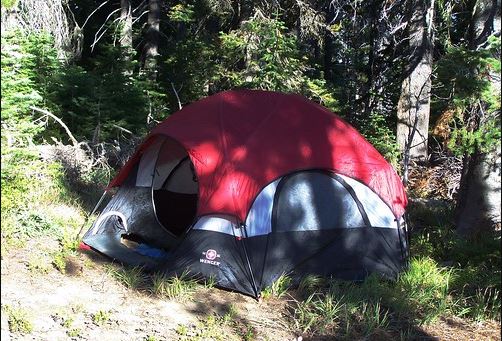
By Jim Dickson | Contributing Writer
Spring is when cabin fever abates and stir crazy people eagerly head for the wide open spaces to go camping.
Guns and tools for said outdoor adventures are as important as a tent or camper, in fact more so, for today’s camping scene is sometimes more perilous than it was in the 1950’s.
While most of the people that I have met while camping have been nice there are a few that I would have been very uncomfortable encountering if I had not been wearing a .45 automatic.
Animals are always present. In Georgia I have been attacked by dogs and wild hogs while camping. Things did not go well for the dogs or hogs as I was well prepared. You are much more likely to be attacked by feral dogs or domestic dogs than the pioneers were to be attacked by wolves or bears.
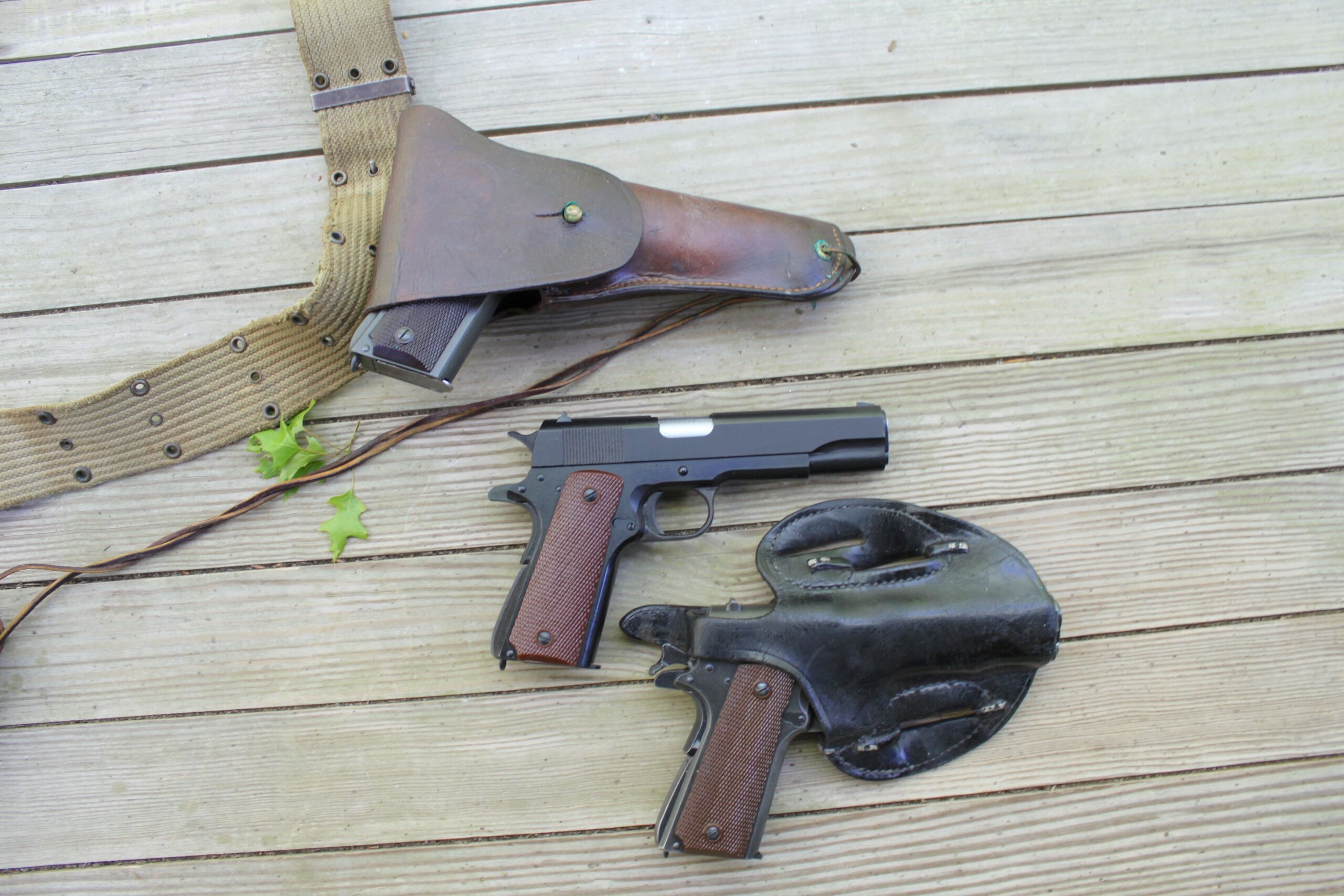
East of the Mississippi River, the black bear is relatively benign although in Alaska and parts of Canada they are confirmed man-eaters. In recent times, coyotes have become so common that a hunter in Georgia was recently attacked by a pack of them. In Glendale, California they killed 3-year-old Kelly Kleen and in Novas Scotia, they killed 19-year-old Taylor Mitchel. I fully believe that they have also accounted for some of the small children that have disappeared without a trace.
For the reasons stated above it should be clear that a pistol is something you need to be wearing when out in the woods. A .45 ACP or .45 Colt will handle anything that you encounter that wishes to do you harm in this hemisphere. A Model 1911 pistol in a pancake holster rides comfortable and readily concealable under a jacket or even a shirt. The G.I Model 1916 holster, when tied down to your leg, offers unrivaled speed and protection in a pure open carry holster. Both of these can be had from El Paso Saddlery which also makes the G.I. Leather clip pouch holding two spare magazines for fast reloads.
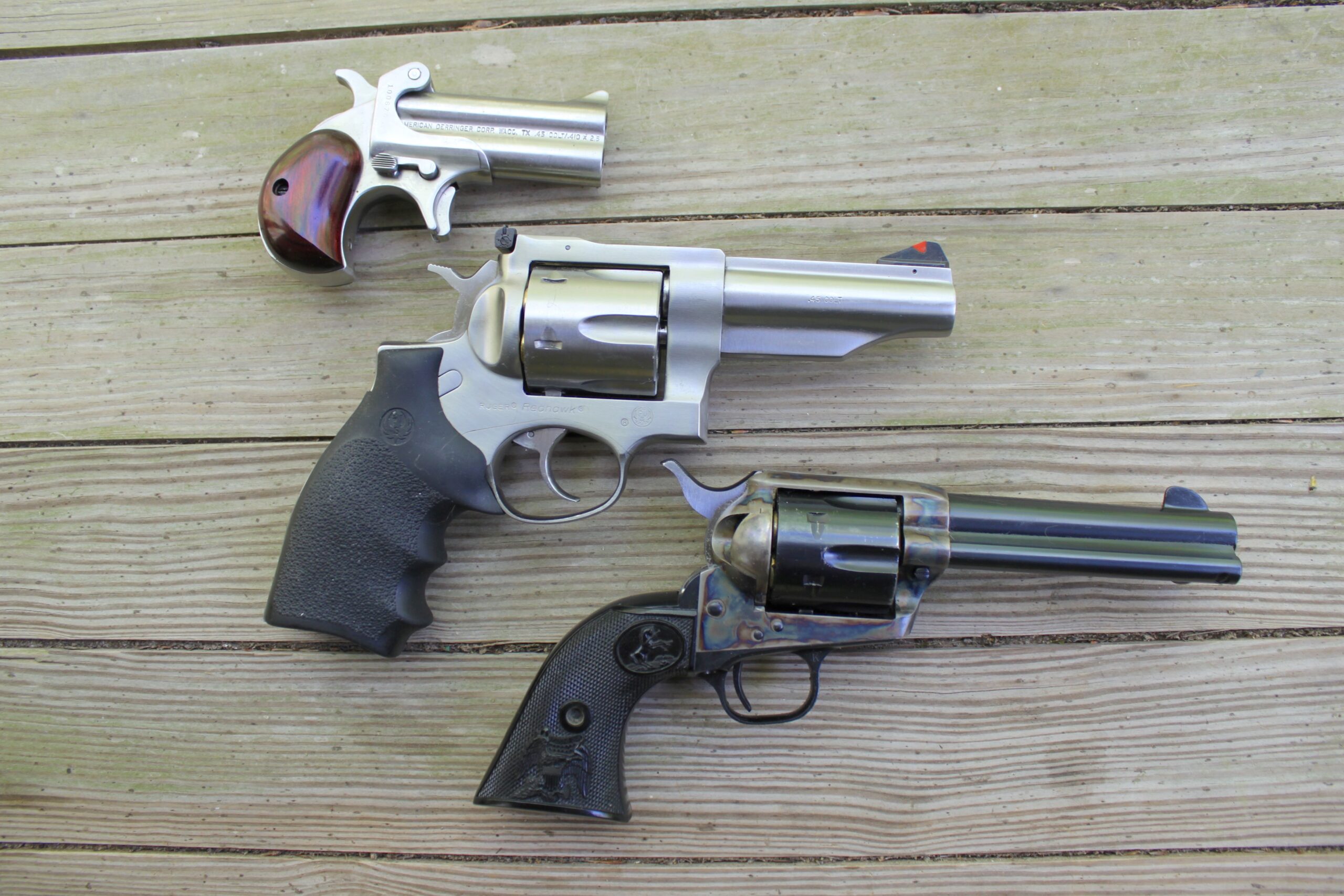
For those who prefer a revolver, I can highly recommend the 4 ¾-inch Colt SAA and the 4-inch Ruger Redhawk, both chambered for .45 Colt. Both are reliable revolvers.
A .22-caliber pistol and/or rifle is often carried for plinking fun and anywhere this is permissible, and they should not be overlooked. If a long gun is carried for defense against wild hogs or bears, then a Mossberg 12-gauge pump shotgun with rifle sights loaded with slugs will literally give you the stopping power of an elephant rifle in an economical gun that even a small woman can handle.
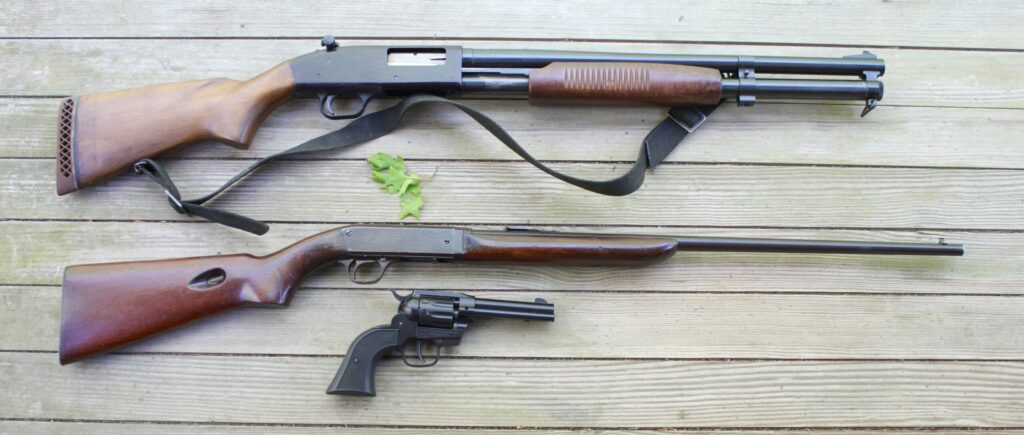
Some folks will opt for a small easy-to-carry pistol and while even the smallest is far better than nothing you should remember that the smaller pistols are less prone to accurate shooting while the smaller calibers require the most precise shot placement for effective stopping power.
Don’t think hollow point bullets or hotter loads will even things out. Hollow points and plain lead bullets don’t always expand and when they do it is at the expense of a drastic cut in their penetration. If you have a .45, you already have a big enough hole and FMJ ammo will give you the penetration when your life depends on it.
There is only one really small pistol that I can recommend, the .45 Colt/410 American Derringer. This gives you two .45 Colt rounds in a stainless steel handmade double Derringer. You won’t be able to hit anything at any distance but when someone or something is attacking you they are coming closer.
Knife Considerations
Cutting tools are badly needed when camping but one tool that you should not take is a chainsaw. The noise of one will disturb man and beast over great distance ruining other peoples’ peaceful camping experience while making sure that all the wildlife you might get to enjoy heads for the next county.
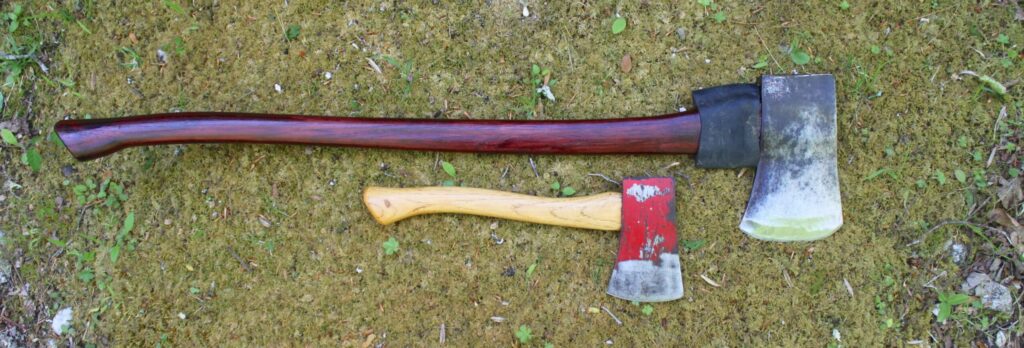
A bow saw, even a small one, will suffice to cut all the wood you need for campfires. You aren’t going to be cutting down big trees, sectioning them, and splitting the sections into firewood on a camping trip. Small stuff will work just fine.
The axe is one of the basic woodsman’s tools yet few people today have more than a rudimentary knowledge about them. If you take an axe, make sure it has a long full length handle and not a short Hudson’s Bay or New England style handle as these short handles must be swung in a smaller arc that can result in chopping your leg if they glance off (as sometimes happens) or you make a bad swing.
Anytime you use an axe you must make certain that it never strikes the dirt where rocks will ruin the edge. If you have to chop something on the ground, make sure that you put wood under it so that the axe edge doesn’t hit the ground.
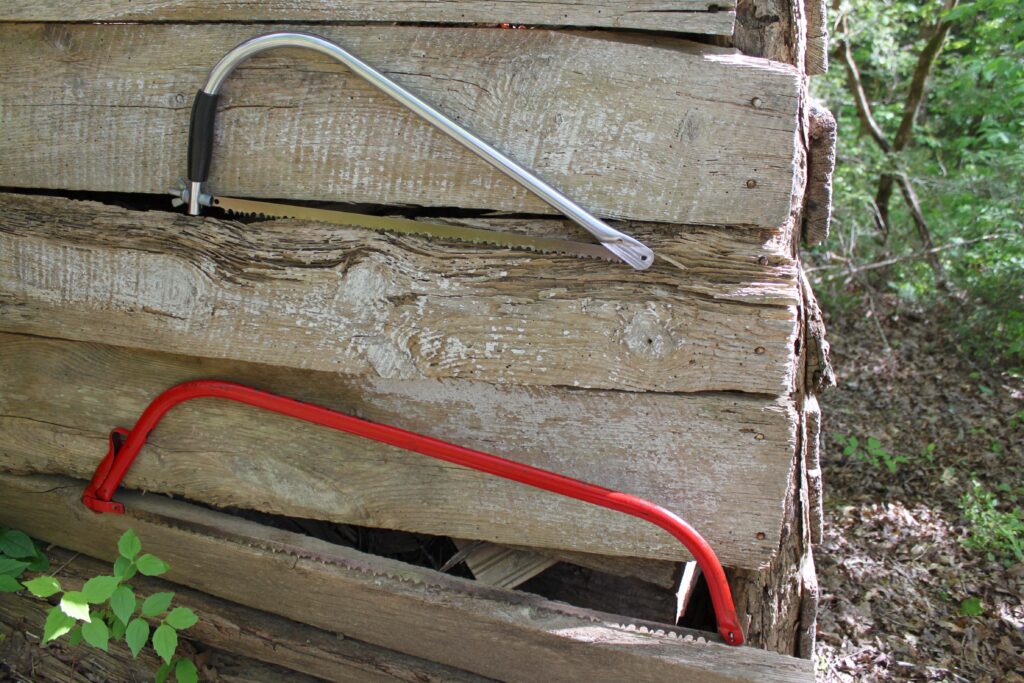
An axe should be sharp so that it bites into the wood deeply without glancing off. This is easy to do because an axe is tempered same as a straight razor. Always keep the axe oiled because rust will take off a razor edge before you can notice it. A sharp edge is a delicate thing so you must have an axe sheath covering the edge when it is not in use.
Most axe handles break because of the inevitable overstrike where the handle contacts the wood being cut or split. A handle bumper such as “The Original Handle Saver” will guard against this.
If attacked by man or beast while using the axe take heart and play the man. Countless wolves and bears have paid with their lives for attacking a woodsman with an axe over the centuries and the axe was one of the principal weapons of the Vikings just as it has been for all mankind over the millenniums.
Hatchets are most useful for cutting and splitting small wood where the extra weight and size of an axe is unnecessarily tiring. Native Americans and frontiersmen made good use of hatchets as they built small concealable fires instead of big bonfires.
Sharpened machetes are efficient light brush cutters where axes and hatchets are not. They depend on speed and the snapping of the wrist into the target. Keep a firm grip on them at all times with thumb and all four fingers lest they stick in something momentarily and end up getting away from you and hitting someone around you. Bamboo is particularly good at this trick.
Knives can be categorized as pocket, sheath, and kitchen. Take your favorite pocket and kitchen knife along. If going fishing be sure to take a fillet knife.
Always carry the means to touch up the edge of your cutting tools and do it as they first begin to show dullness NOT after they get so dull that sharpening becomes a major project.
Firearms and quality cutting tools are important pieces of equipment whenever camping, especially in the back country, and in an emergency, they might become critical survival tools.



